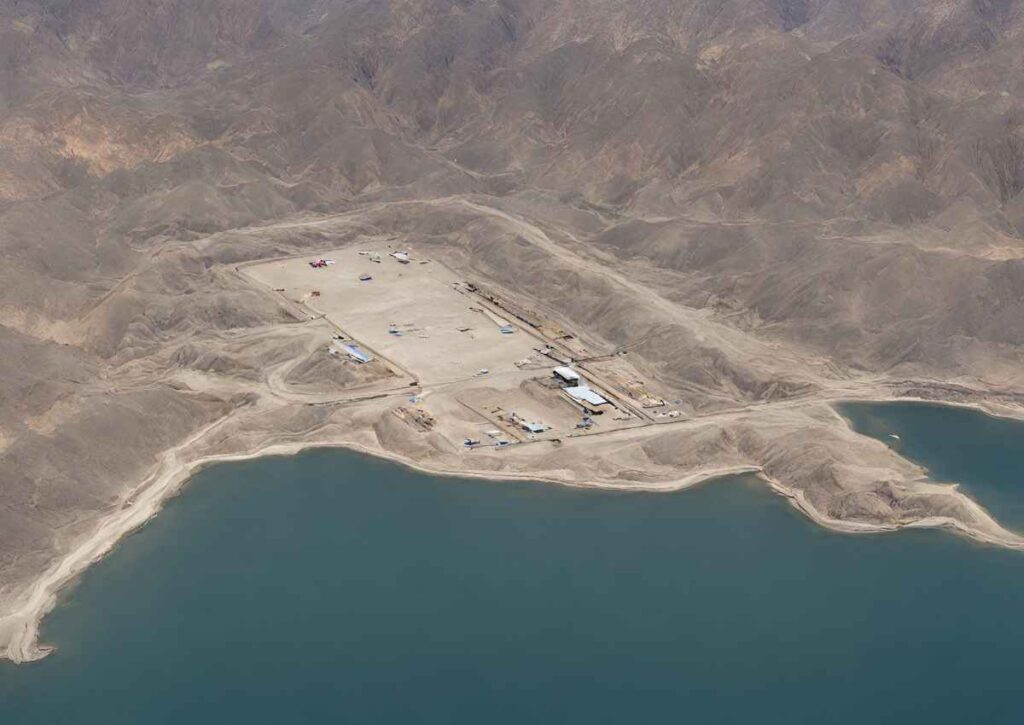The Salt Lake Oil Field, nestled beneath the bustling city of Los Angeles, California, has a rich history dating back to its discovery in 1902.
This underground treasure trove has yielded over 50 million barrels of oil since its inception, shaping the city’s landscape and contributing significantly to its early twentieth-century boom.
In this blog post, we’ll delve into the fascinating details surrounding the San Vicente Drill Site, exploring its geology, history, production, and operations.
Setting The Scene
The Salt Lake Oil Field is just one of many oil fields scattered across the Los Angeles Basin.
Situated adjacent to the San Vicente Oil Field and the Beverly Hills Oil Field, it occupies a significant portion of Midtown Los Angeles.
Despite its urban surroundings, the field boasts a productive region approximately three miles long and one mile across, making it a unique site for oil extraction in an entirely urban setting.
Geology Unveiled

The geological makeup of the Salt Lake Oil Field is as intriguing as its history.
Nestled near the northern edge of the Los Angeles Basin, the field is punctuated by faults such as the 3rd Street Fault and the 6th Street Fault.
These geological features have played a crucial role in the emergence of crude oil on the surface, notably contributing to the formation of the famous La Brea Tar Pits.
A Closer Look At Production
Despite its urban environment, the Salt Lake Oil Field has continued to be a site of production, albeit on a smaller scale compared to its early twentieth-century peak.
Thanks to advancements in slant drilling technology, the field has seen a resurgence in activity since the 1960s.
Operations at the San Vicente Drill Site, including directional drilling techniques, have enabled continued extraction from the field’s productive horizons.
Historical Significance

The history of the Salt Lake Oil Field is intertwined with the growth and development of Los Angeles.
From its rapid expansion in the early 1900s to its decline in the mid-twentieth century, the field has witnessed the ebb and flow of oil production alongside the city’s evolution.
Notable events, such as the 1985 Ross Dress for Less explosion, underscore the complex relationship between urban development and oil extraction.
Addressing Challenges
The urban nature of the Salt Lake Oil Field presents unique challenges for operations and safety.
Methane gas seepage, a byproduct of oil extraction, has posed safety concerns, leading to incidents such as the 1985 explosion.
Mitigation efforts, including the designation of High Potential Methane Zones and the implementation of methane detection systems, highlight the ongoing efforts to address these challenges.
Looking Ahead

As the Salt Lake Oil Field continues to be a site of active extraction, it serves as a reminder of the intricate relationship between urban development and natural resources.
With advancements in technology and a growing emphasis on sustainability, the future of the San Vicente Drill Site and similar urban oil fields may evolve in new and innovative ways.
Conclusion
The San Vicente Drill Site stands as a testament to the rich history and ongoing significance of oil extraction in Los Angeles.
From its geological formations to its operational challenges, the field offers a glimpse into the complex interplay between urbanization and resource exploitation.
As we look to the future, the legacy of the Salt Lake Oil Field serves as a reminder of the importance of responsible stewardship and innovation in harnessing our natural resources.
FAQs
What is the significance of the San Vicente Drill Site in Los Angeles’ history?
The San Vicente Drill Site, part of the Salt Lake Oil Field, holds historical significance as one of the earliest and most productive oil fields in California.
Discovered in 1902, it played a pivotal role in fueling the early twentieth-century oil boom in the region.
How has the urban environment influenced operations at the San Vicente Drill Site?
Operating in an urban environment presents unique challenges for oil extraction.
To mitigate noise and odor concerns, drilling at the San Vicente Drill Site primarily utilizes directional drilling techniques, enabling extraction from a shielded drilling island adjacent to the Beverly Center.
What measures are in place to address safety concerns related to methane gas seepage?
Following incidents such as the 1985 Ross Dress for Less explosion, comprehensive measures have been implemented to address methane gas seepage.
This includes the designation of High Potential Methane Zones and the installation of methane detection systems to ensure early warning of gas accumulation.
How has technological advancement impacted production at the San Vicente Drill Site?
Technological advancements, particularly in slant drilling technology, have revitalized production at the San Vicente Drill Site since the 1960s.
These advancements have enabled continued extraction from the field’s productive horizons, contributing to its ongoing significance.
What is the geological makeup of the Salt Lake Oil Field?
The Salt Lake Oil Field is characterized by fault lines such as the 3rd Street Fault and the 6th Street Fault, which have played a crucial role in the emergence of crude oil on the surface, notably contributing to the formation of the famous La Brea Tar Pits.
How does the South Salt Lake Oil Field compare to its northern neighbor, the Salt Lake Oil Field?
The South Salt Lake Oil Field, discovered in 1970, is smaller in size compared to the Salt Lake Oil Field.
However, it shares similar urban drilling techniques and is still productive, contributing to the overall oil extraction efforts in the region.
Also Read
Drill Bit For Christmas Tree: The #101 Answer Stand Drill Bit









